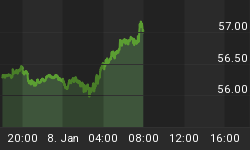Following a dramatic decline in births in the world’s most populous country, Beijing in 2016 scrapped its decades-old one-child policy, replacing it with a two-child limit in a bid to control the swelling population and stave off risks to its economy from a rapidly aging population. Unfortunately, that largely failed to boost child births thanks to the high cost of raising children in Chinese cities.
And now the world’s most populous country has pushed the birth cap even further by allowing married Chinese couples to have up to three children, China announced on Monday.
Following a politburo meeting chaired by President Xi Jinping, the official Xinhua news agency says the policy change will come with "supportive measures conducive to improving our country's population structure, fulfilling the country's strategy of actively coping with an ageing population."
As of late last year, fines of 130,000 yuan ($20,440) were being imposed on people for having a third child.
Population decline
For years, experts have warned that it’s only a matter of time before China records its first population decline since the famine that accompanied the Great Leap Forward following Mao Zedong’s disastrous economic policy in the late 1950s that resulted in the deaths of tens of millions of Chinese people.
The latest census shows that the country has once again avoided that fate--but only barely.
The once-a-decade census results released a few weeks ago show that China's population grew at its slowest pace in decades, with the average annual growth rate clocking in at 0.53% over the past 10 years, down from a rate of 0.57% between 2000 and 2010. China’s population now stands at 1.41 billion.
According to Ning Jizhe, head of the National Bureau of Statistics, 12 million babies were born last year in China, marking a significant decrease from 18 million newborns just four years prior.
Mr. Ning says that the lower births are a natural result of China's social and economic development, a trend consistent with other developed nations where birth rates tend to fall due to education or other priorities such as careers.
China is not alone: Neighbouring countries including Japan and South Korea, for example, have also seen birth rates fall to record lows in recent years despite various government incentives to encourage couples to have more children.
Last year, South Korea recorded more deaths than births, marking the first population decline in the country’s modern history.
Shrinking populations tend to be problematic due to the inverted age structure, with more old people than the young.
Beijing fears that an aging population may mean that there won't be enough workers in the future to support the elderly in the near future.
The Chinese State Council launched the one-child policy in 1979 in a bid to bring under control a high population growth rate in contrast to Mao Zedong's ideology in the 1960s that “the more people, the stronger we are.” Fearing a population explosion, Beijing implemented its one-child policy, which not only succeeded in curbing population growth but also led to coerced sterilizations and sex-selective abortions that exacerbated a gender imbalance with many couples preferring male children.
Deng Xiao-ping, the acknowledged architect of China's contemporary economic miracle, was a major sponsor of the one-child policy. Xiao-ping warned that China would be unable to develop its economy and raise the living standards of its people unless the birth rate fell rapidly.
Economists and demographers now agree that a falling birth rate offers a demographic dividend, as the economically productive proportion of the population grows more rapidly than the general population. Most agree that China's economy would not have grown by 7-8% a year over the past decade, lifting an unprecedented 150 million people out of abject poverty, had the population maintained its earlier growth rate.
Unfortunately, the pendulum has now swung too far in the opposite direction.
The latest data shows that China now has a fertility rate of just 1.3 children per woman, on par with aging societies like Japan and Italy and way below the ~2.1 needed for replacement level.
Despite the recent move by Beijing to lift the birth cap, few people are under the illusion that it will tilt anyone's calculus in a meaningful way.
As Yifei Li, a sociologist at NYU Shanghai, has told Reuters, most people are held back not by the two-children limit, but by the incredibly high costs of raising children in today's China including housing, food, and extracurricular activities.
The majority of Chinese clearly have no intention to start having more children.
In a recent poll on Xinhua's Weibo account asking #AreYouReady for the three-child policy, about 29,000 of 31,000 respondents responded by saying they would “never think of it” while the remainder either said "I'm ready and very eager to do so", "it's on my agenda", or “I'm hesitating and there's lot to consider.’’
By Alex Kimani for Safehaven.com

















